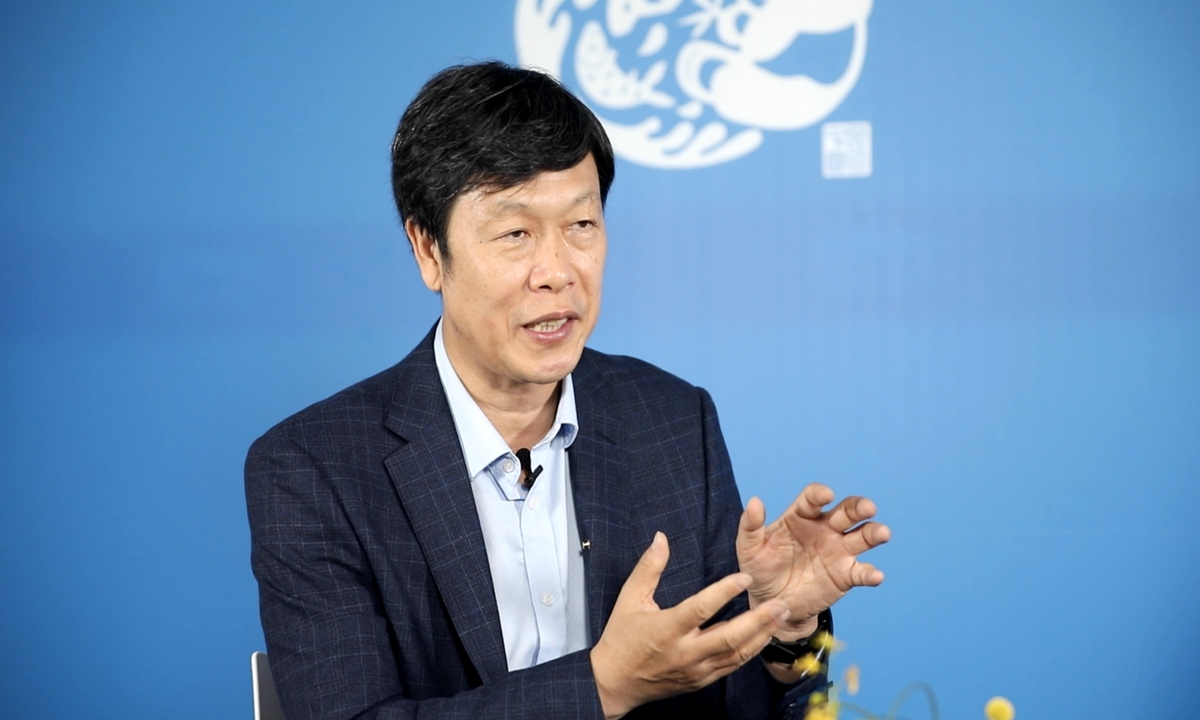
Chen Fahu, an academician of the Chinese Academy of Sciences and director of the academy's Institute of Tibetan Plateau Research. Photo: Courtesy of Institute of Tibetan Plateau Research
China needs to vigorously develop photovoltaic power station projects in the Qinghai-Xizang Plateau to achieve its double targets of carbon peaking and neutrality, and to track, detect and assess the impact of photovoltaic projects on the ecological environment on the plateau, a senior Chinese scientist said on the sidelines of the COP15 on Thursday in Kunming, Southwest China's Yunnan Province.
Chen Fahu, an academician of the Chinese Academy of Sciences and director of the academy's Institute of Tibetan Plateau Research, told the Global Times that the Qinghai-Xizang Plateau has vast desert and Gobi areas, such as the Qaidam Basin in Qinghai Province and the Ngari Prefecture of the Xizang (Tibet) Autonomous Region, with abundant photovoltaic energy resources. And boosting photovoltaic bases in the plateau is of positive significance to reaching the targets of carbon peaking and neutrality and the sustainable development of the ecosystem.
Some studies show that photovoltaic bases in desert areas could reduce evaporation and improve the ecosystem. Yet, Chen said "We still need to track and assess the impact of photovoltaic energy on the ecology of the plateau and formulate ecological benefit evaluation standards for the photovoltaic industry."
All-out efforts are needed to push for more photovoltaic bases on the plateau to form a complementary mechanism between hydroelectric energy, wind energy and photovoltaic energy on the plateau, Chen said, noting that the photovoltaic bases on the plateau are scattered and small, which are not enough to meet the demand of the electric power industry.
About 4.4 billion kilowatts of hydropower, solar energy and wind energy are exploitable on the Qinghai-Xizang Plateau, but only about 2 percent has been developed, Chen said.
While addressing the leaders' summit of the COP15 on Tuesday, President Xi Jinping said that China will release implementation plans to peak emissions in key areas and sectors as well as a series of support measures to achieve carbon peaking and neutrality targets, and make faster progress in planning and developing large wind power and photovoltaic bases in sandy areas, rocky areas and deserts.
The Qinghai-Xizang Plateau is a world-leading source of solar energy. In 2014, Xizang received approval from the central government to develop photovoltaic power energy and enjoy priority state support.
The plateau can significantly help China achieve carbon neutrality, and China is working on turning the plateau into a demonstration area for China's carbon neutrality campaign.
The total carbon emissions of the plateau is about 100 million tons, less than 1 percent of the national total. Under the current warm and humid background, the plateau carbon sink is about 110 million tons of carbon dioxide per year, accounting for about 10 to 16 percent of the total national carbon sink.
"It is estimated that the ecosystem on the Qinghai-Xizang Plateau will absorb 190 to 230 million tons of carbon dioxide annually by 2060, nearly double the current level," Chen said.


